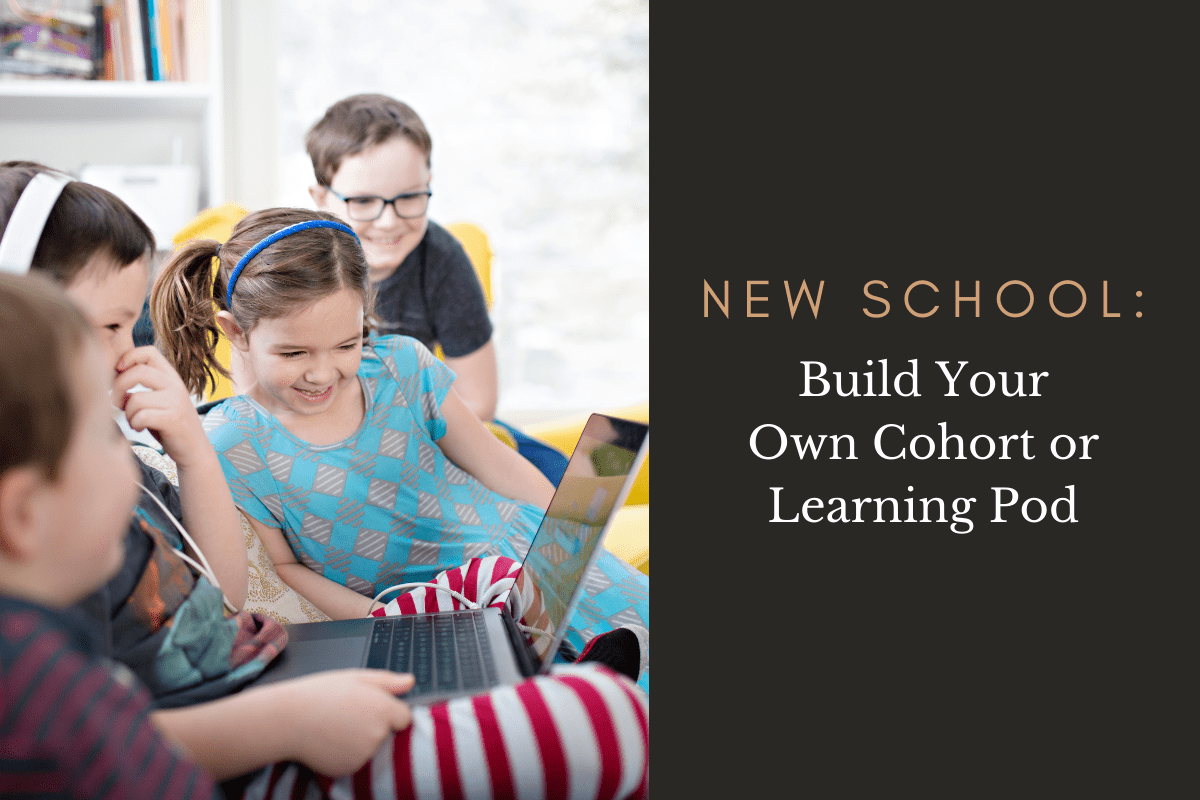Distance Learning in a Pandemic
Dear Mamas,
I’ve created this guide because we’ve found something that works great for our family, and people keep asking for details about how it was put together. I’m going to share what worked for us in hopes that this will give some of you a starting point. It’s a bit lengthy, but very comprehensive!
Guide to creating your own cohort/pod:
Our children need to socially learn, and parents need our space, in whatever capacity that is. COVID-19 halted all of that. Distance learning is challenging, especially if you’re working from home, trading work time on/off with your partner at home, all while trying to stay present with your lonely child(ren).
Here’s what didn’t work for me –
Managing my consulting business from home is an awesome opportunity. I saw it as a chance to suddenly balance the guilt ridden time I’d spent working late hours on other people’s businesses, that had taken me away from being present with my daughter, Vivienne. Somehow, I thought “I can do this”. NOT! Zoom calls with teachers at different times were not easy. Then I had clients on the other end wanting to chat, which I’d often have to take outside, as I’d be interrupted and distracted with Vivienne and her virtual class.
Getting my squiggly 5-year old to sit during a 35+minute virtual class was painstaking, and I felt stressed as she’d walk away, be disinterested, and had no patience to wait her ‘turn’ to get called upon on. This was not working. There was no balance. My husband was in the same position, working from home. We’d sort of get a schedule on who was doing what and when with distance learning, but that quickly became another reality roll of that wasn’t going to work either.
Here’s what worked for me –
Asking for help. Feeling defeated, as two capable parents who couldn’t manage working from home while helping our only child with her distance learning, we problem solved. We problem solved by letting our friends, neighbors, anyone who would listen, know that we needed help! We began forming ideas, and once we came up with a plan for help, life seemed reasonable again. As reasonable as working and learning at home during a pandemic can be.
During my problem solving, I mentioned the need for help to a neighbor, who referred me to a Teacher’s Aide that she knew. After reviewing her resume, I called for an immediate interview, then vetted and hired. Our Teachers Aide came onsite and taught our child a private school distance learning curriculum.
Now, what I skipped over was the whole discussion of a COVID protocol for us all. The judgement: who are you hanging out with, what are your family members doing during the pandemic, and where have you been? A pledge, in best description, was discussed. We agreed to be transparent on setting boundaries to prevent the spread of the virus. We discussed the options to potentially wear masks, increase hand washing, sanitizing the home areas that were in the teachable areas, and which bathroom to use, amongst other things. We discussed what we would do if we didn’t ‘feel good’. We discussed plans B to Z.
This worked! My daughter had attention from a very qualified playmate/teacher, and we could breathe with work again. The plan worked. Still lonely, but it worked. Summer camps were cancelling and it became apparent that we were in for the long haul, so I reached out to another classmate’s parents at school (whose daughter had attended preschool with her – so I knew the parents pretty well), and we thought of another single child with working parents who we could potentially add into my ‘Camp Wheaton’ program.
The discussion with the other families went roughly as follows:
- Teacher is open to adding 2 more close age/friends who get along.
- Teacher will come up with a camp learn-while-you-are-playing program.
- Each family is responsible for making payment directly to teacher.
- Payment per week per family; staggered price options in case a camper could not attend for the week, how the rate would fluctuate.
- Setting camp hours.
- Why we are doing this together – Socialization, freedom for 5 hours to get some work done, and a pretty norm camp life, and peace of mind.
- Small cohort of 3 families with transparency.
- Discussed the above pledge that I had with Teacher’s Aide.
- Discussed no other friends could join, that it could get out of control pretty quickly as it’s hard to say no.
- Discussed the hours, so no split days, no split weeks, it was a shared cost and scheduled responsibility.
- Discussed where camp inside the house would be set up – den, playroom, outdoor area, nearby park, etc.
- Discussed the shared cost of craft supplies.
- Designated area for physical belongs (cubbies/bins).
- Discussed food allergies and determined bring your own snack and lunch (set times).
- Discussed pets, safety in the home, and who would be at home during camp hours.
- Discussed setting up a quiet area if one of the campers needed a break.
- Discussed potential travel plans, work, or vacation.
- Discussed onsite office work – who is exposed to who at work.
- Discussed family time with non-household members and friends.
- Discussed testing as needed.
- Discussed Plan B – Z.
The next step was to meet the Teacher’s Aide and open the discussion on expectations. Since this was a camp style program, there was no emphasis on making any major educational goals for our children like writing full essays and conducting research on their own. We talked about rotating the camp on regular days at each other’s homes, so we could plan on total silence to get some serious work done with major catch ups. The girls had something to look forward to! Our Teacher’s Aide would share pics and vids, which made an awesome break in the day for us parents, giving us something to look forward to also.
Other things to take into consideration:
- Link with families with similar aged children, so nappers don’t take over the day, unless they’re all nappers… 2 year and 6 years are big gaps for trying to schedule something consistently.
- Stay within your assigned school and teacher assignment if necessary, so 2 teachers don’t zoom at the same time.
- Consistent hours – try to keep all students together as the entry and exits can be distracting to the other students.
- Keep a low expectation on the learning curve in the beginning; we are all trying to navigate and forced learning can be harmful and tearful. Have a clear expectation and review with your instructor on the limits on when to try something else. Give yourself and the instructor some grace to ease in.
- Rotate the campus if you can. Kids are rough on houses. Set rules on running, yelling, whatever you can so you have a reference point.
- Keep things simple – less is more.
- Liability. Create a waiver of non-responsibility and make sure your homeowner’s insurance is valid.
Planning is everything. Stay current on the conditions of COVID so you can be fluid with your plan. Discuss the discomforts of the pandemic, think outside the box, and don’t be afraid to ask for help, and we can get thru this together as a village.
Mamas supporting mamas – We are Long Beach Moms!
With much gratitude and health,
Angelica Wheaton
***This document is for informational purposes only. It is not endorsed, nor has it been reviewed by any educational or health organization or by the CDC. I encourage you to seek expert counsel when considering the formation of your own cohort/pod. This model worked for my family, as the two other families in our group are close friends of ours and we all decided on the same health and safety guidelines. This is to be used as a guide, and in no way am I, or Long Beach Moms, LLC responsible nor liable on the outcome of the program.





